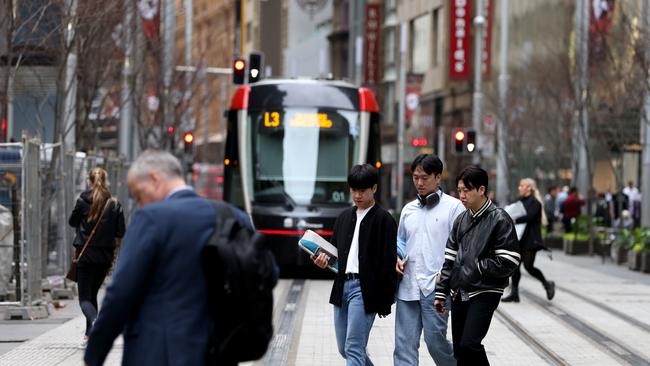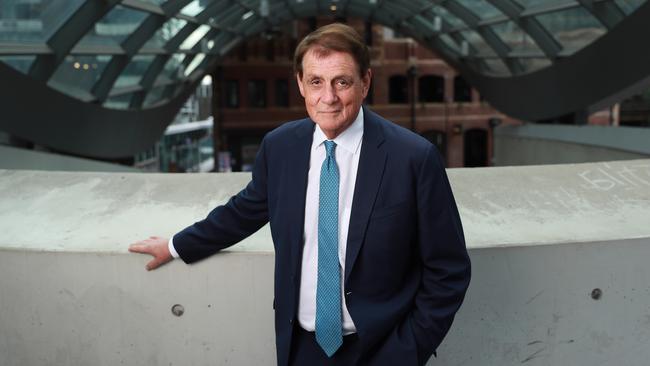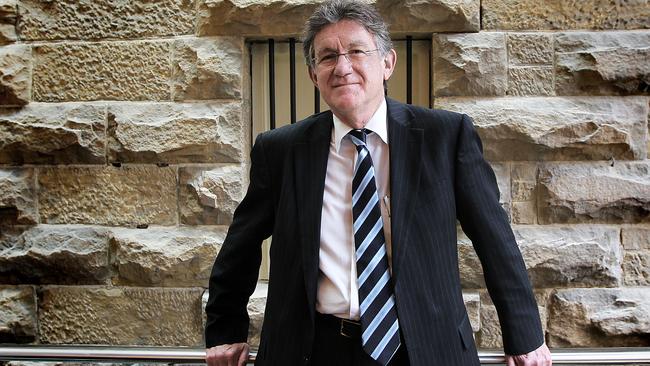Business and consumers at odds, complicating RBA’s move
Westpac’s consumer sentiment index shows the public is so pessimistic that sentiment is lower than it was during the GFC.

Weak consumer sentiment, and strong business confidence and conditions highlight the challenge for the Reserve Bank as it jacks up interest rates to prevent a damaging prices-wages spiral.
Consumer spending may hit the wall after Westpac’s consumer sentiment index dived 6.9 per cent to 78.5 points in February as hopes of a break from cost-of-living pressures and rate rises were dashed by stronger-than-expected CPI data and hawkish rates guidance from the RBA this month.
Westpac said consumers were “deeply pessimistic”, with sentiment now slightly lower than it was during the Global Financial Crisis and only slightly above the level it reached with the pandemic hit.
“Prior to that, we need to go back to the deep recession in the early 1990s to find weaker Index readings,” said Westpac senior economist Matthew Hassan.
But NAB’s strong business survey showed the RBA can’t afford to let businesses think the central bank will underwrite demand by cutting interest rates at the first whiff of an economic slowdown.

Unusually strong business conditions and confidence, stubbornly-high inflation, an unemployment rate near 50-year lows and CPI-linked wages rises is how a wages-prices spiral could get started.
NAB’s latest Monthly Business Survey was conducted between January 27 and February 2, and therefore would have captured the impact of the December quarter CPI data but not the RBA’s February interest rate increase and more hawkish guidance on interest rates.
However, it validated the hawkish shift from the RBA this month and reinforced market expectations of another three 25 basis point rate rises to a “terminal” rate of 4.1 per cent by August.
Westpac chief economist Bill Evans told this column in September that taking the cash rate to 4 per cent would be “very dangerous” due to the amount of home loan leverage.
But business conditions rose 5 points to a “very high” 18 index points – with trading, profitability and employment and “well above average”, while business confidence rose 6 points to 6 index points – also well above its long-term average – driven by the transport & utilities, and wholesales industries.

NAB chief economist Alan Oster said the NAB Monthly Business Survey suggests that the Australian economy has remained resilient to headwinds from inflation and higher interest
“Demand has remained elevated, likely supported by strong population growth, and concerns about global growth prospects appear to have eased,” Mr Oster said.
“From here, the pace of ongoing supply chain healing and strength of wage growth will be important in shaping how much further cost pressures ease, while the resilience of consumption will continue to be tested as higher rates are passed through to households.”
He said the improvement in confidence suggest firms have a more optimistic outlook as concerns about global growth prospects ease, while strong conditions are also providing evidence that the “economy is more resilient than previously expected.”
Price and cost growth in the survey re-accelerated, albeit they still appeared to have peaked in July.
NAB economists were unconvinced, boosting their terminal rate forecast to 4.1 per cent, consistent with market pricing. That was in line with forecasts from Goldman Sachs, Morgan Stanley and Deutsche Bank, but not quite as high as Morgan’s Financial’s 4.85 per cent.
“Since we upped our call to 3.6 per cent last October, the economy has remained resilient to both higher inflation and interest rates,” Mr Oster said.
“Our business survey out today and consumer transaction data tomorrow (Wednesday) indicate this resilience continued in January.”
“And we continue to expect strong prints for wages and inflation to continue in the near term.”

Mr Oster still sees a “strong case for the RBA to look to pause the current hiking cycle soon” given the considerable tightening put in place, the “long and variable lags’ of monetary policy, and the need to “look through some unusual features of the post-Covid normalisation period.
“However, the RBA’s framing of domestic inflationary pressures has clearly changed and as such, we judge it to be unlikely the board will feel comfortable pausing before May,” he said.
Still, a cash rate peak above 4 per cent should have a significant impact on economic growth.
Mr Oster now sees the Australian economy growing by less than 1 per cent – well below trend growth – over both 2023 and 2024 despite the more optimistic near-term outlook.
That’s well below the RBA’s latest forecasts in its February Statement on Monetary Policy – where it saw year-average annual GDP growth of 2.25 per cent in 2023 and 1.5 per cent in 2024.
However, the RBA’s forecasts were conditioned on a cash rate path reflecting financial market pricing and surveys of economists as of February 8th – with an assumed peak in the cash rate of around 3.75 per cent in the second half of 2023 before declining to around 3 per cent by mid-2025.
NAB also expects that the RBA will need to cut interest rates in 2024 to closer to a “neutral” monetary policy setting to support growth as inflation moderates.




To join the conversation, please log in. Don't have an account? Register
Join the conversation, you are commenting as Logout